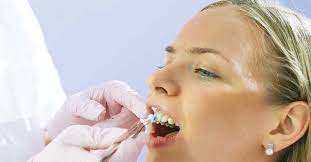Myths and Misconceptions about Varicose Veins

As one age, one faces multiple changes, and varicose veins are a part of that experience. The issues that accompany vary in severity; this might explain why so many myths revolve around them. Varicose veins are relatively prominent, and many consult a varicose vein clinic immediately.
However, not every case requires a consultation. Read on to understand the misconceptions and myths about varicose veins and when and if you need medical intervention.
What are Varicose Veins?
Varicose veins present themselves as one gets older. They are bluish-purple/green and bulging veins visible on the skin’s surface. These are damaged veins with weak walls or leaky valves. Many typically refer to smaller varicose veins like spider veins.
Myth 1: Varicose Veins are purely Cosmetic
Varicose veins are cosmetic to an extent. They are typically visible on legs and can keep one from wearing skirts and shorts confidently.
Smaller spider veins are entirely cosmetic, but varicose veins can have significant health impacts.
They cause swelling in extreme cases, and the discomfort they cause can range from uncomfortable to painful. In some cases, they cause the skin to become thicker and change the colour of the skin. Varicose veins increase one’s risk of acquiring blood clots, and upon injury, can cause excessive bleeding.
Myth 2: Only Older Women deal with Varicose Veins
While over one-third of all adults that have varicose veins are women, they can occur in men. Additionally, young adults can also develop varicose veins, even though it is more frequently visible in the adult population.
Progesterone and Estrogen are female hormones that cause muscles in the vein to relax. These hormones may be responsible for the frequency of varicose vein cases in the female population.
Myth 3: There is no treatment for Varicose Veins
Upon consulting a varicose vein clinic, one can easily find multiple treatment options. These options range from surgery to non-invasive procedures. There are also lifestyle changes that one can make to avoid the formation of varicose veins.
These lifestyle changes include holding your legs to your heart for a few minutes every day. Doing this reduces pressure in the veins. Regular physical exercise and working on obesity can decrease one’s chances of dealing with varicose veins.
Myth 4: Surgery is the Only Treatment Option
In the past, this was true. However, with technological advancements, there are multiple non-invasive treatment options available.
Sclerotherapy
This treatment includes injecting a sclerosing agent mixed with air into the vein. Doing this closes off the varicose vein, redirecting blood flow into another one.
Microphlebectomy
The medical professional makes several small incisions on the skin to destroy the varicose veins. Many varicose vein clinics recommend pairing an endovenous treatment alongside. Microphlebectomy is relatively more invasive than other treatments but less invasive than surgery.
Endovenous Ablation
This treatment option involves the use of heat to destroy the varicose vein internally. This destruction of varicose veins redirects blood flow towards healthier veins.
Myth 5: Varicose Vein Treatments are Painful
Any post-surgery recovery is relatively painful. However, with the availability of non-invasive and less invasive treatments, pain isn’t a concern. Less invasive procedures have faster recovery estimates and involve less pain.
Overall, the benefits one receives from varicose vein treatments far exceeds the discomfort the treatment causes.
Myth 6: Treatment is Temporary, and Varicose Veins return
Reoccurrence of varicose veins post-treatment was high when the only treatment option available was surgery. However, with minimally invasive procedures, the chances of varicose veins returning post-treatment are significantly low.
Myth 7: Women can only opt for varicose vein treatment post-childbirth
This myth seems to draw its basis from the misconception about older women. However, women can obtain varicose vein treatments during pregnancies without any complications.



